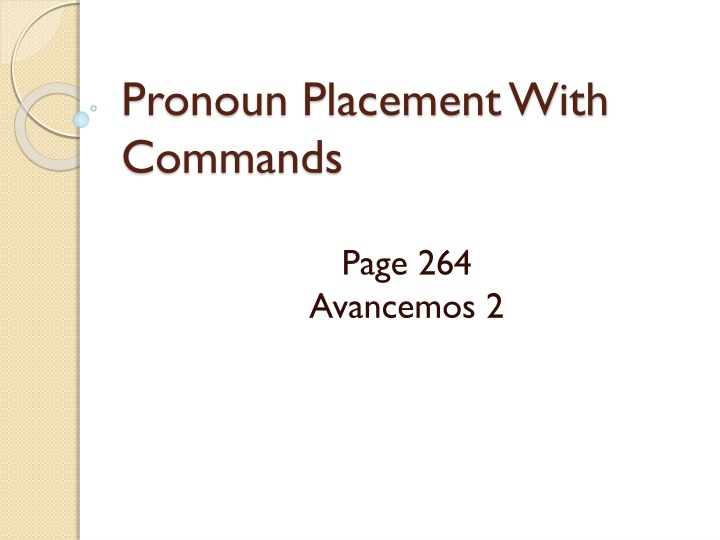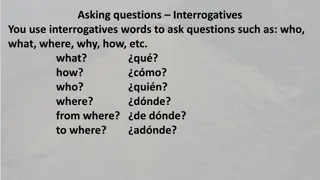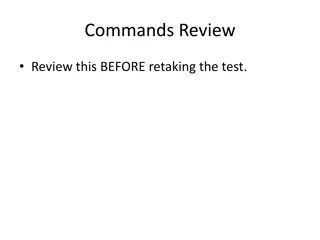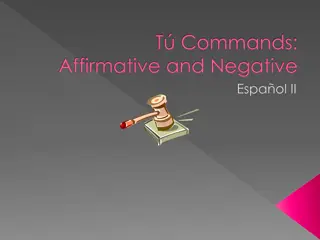Pronoun Placement with Commands in English and Spanish
Understanding pronoun placement in commands is crucial in both English and Spanish. In English, pronouns are placed after the verb in both affirmative and negative commands. However, in Spanish, affirmatives attach pronouns while negatives place them in front of the verb. Examples and accent rules are provided for clarity in both languages.
Download Presentation

Please find below an Image/Link to download the presentation.
The content on the website is provided AS IS for your information and personal use only. It may not be sold, licensed, or shared on other websites without obtaining consent from the author.If you encounter any issues during the download, it is possible that the publisher has removed the file from their server.
You are allowed to download the files provided on this website for personal or commercial use, subject to the condition that they are used lawfully. All files are the property of their respective owners.
The content on the website is provided AS IS for your information and personal use only. It may not be sold, licensed, or shared on other websites without obtaining consent from the author.
E N D
Presentation Transcript
Pronoun Placement With Commands Page 264 Avancemos 2
Pronoun Placement with Commands In English for both affirmative and negative commands, we place pronouns AFTER the verb. Give me the ball Don t touch them.
Pronoun Placement with Commands Pronoun placement is different for Spanish commands. AFFIRMATIVES ATTACH NEGATIVES IN FRONT
Pronoun Placement with Commands Affirmatives ATTACH: Take us to the supermarket. Ll venos al supermercado. Put them on the table. P nganlas en la mesa. When a command is two or more syllables, put an accent on the next to last syllable.
Pronoun Placement with Commands Negatives IN FRONT: Don t sell her this shirt. No le venda esta camisa. Don t taste it. No lo prueben.























